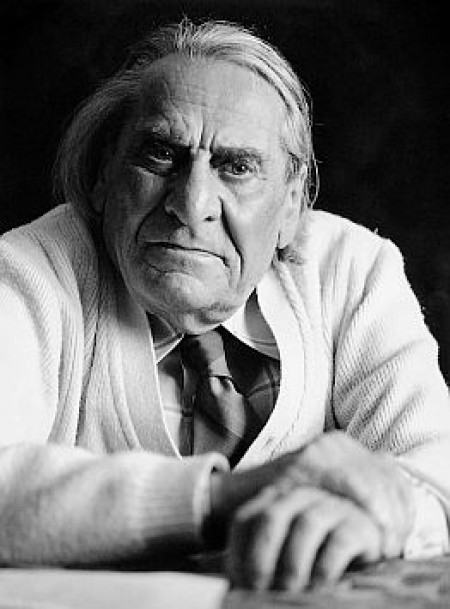
12 December 1896, Szigetszentmiklós, – 12 May 1982, Budapest
Jenő Ádám was born at Szigetszentmiklós, a village with a population of slightly more than 2500 people at that time. His musical career had a hard beginning. He was an autodidact of musical notation at the age of ten, as he declared, while his first instrumental lessons could start only when he became a student of the Teachers' Training Institute of Buda, already. He earned his degree as a teacher in 1915, when he got a job as a public teacher and enrolled at the composition division of the Academy of Music, besides that. His plans were broken by World War I: he was taken to Siberia as a prisoner of war in 1916. Music remained the only means of survival for him: he organized a choir and an orchestra at the prison camp, later playing the piano at cinemas, working as a theater factotum and even being a founder of a music school, while trying to get home through Russia affected by civil war after the revolutions of 1917. He could get back to Budapest only after the end of the war in the autumn of 1920. Just arrived home he completed the officially four-year curriculum of the Teachers' Training Institute of Citizens' Schools in one and a half years with a special permission. He began to teach literature and Hungarian, history, German language and geography at Kőbánya. He could reconsider the continuation of his studies at the Academy of Music, only at that time when his life became regularized again to a certain extent.
In November 1921 he was admitted to the composition class of Zoltán Kodály, who was teaching again after having been suspended for his activity during the term of the Republic of Councils. Kodály's conception of the necessity for making musical education reachable for the public and his hard teaching made a life-long impact on Jenő Ádám. After studying under the direction of Albert Siklós in academic year 1922/1923, he returned to Kodály's class and earned his degree from the Academy of Music in 1925. His career as a conductor of oratorios began not too much later: working as the coach of the Budapest Choir and Orchestra Society, he had to substitute Emil Lichtenberg, conductor of the society at a performance of Haydn's Seasons oratorio in 1929. Following this event he conducted several oratorios through years, with great success. He earned his conductor degree in 1933 as a student of Felix Weingartner. Besides that he was composing continuously (his opera Magyar karácsony [Hungarian Christmas] was premiered by the Hungarian Opera in 1931) and visiting the countryside for collecting folksongs, primarily at the end of the 1920s. In addition he was invited to teach at the Academy of Music from the academic year 1930/1931 by Jenő Hubay, director. At the beginning he conducted the choir of the institute only, but later he taught several courses at the Academy until his retirement in 1959: solfége, choral conducting, folk music, vocal study, vocal role practice, Lied literature, methodology of singing lessons, as well as the subject called Curriculum and Instruction.
He was probably most acquainted with the methodology of class singing teaching among all his colleagues. The question of making music education effective was important for him from an early age that he connected in mind with the need for an extensive familiarization of Hungarian folk music, largely by the influence of Kodály. He was elected as chair of the Hungarian School Music Teachers' Association, founded in the 1930s. He was extremely active there, as well: he organized courses and lectures for school music teachers on the methodology of teaching score reading by the help of the system of relative solmization that he became acquainted with at a music pedagogy conference in Saarbrücken in 1933. Their relationship with Kodály had not been ceased after Adam's years of study with him; even it became closer when they both strived to effectuate the same idea of music and public education as colleagues already. That Ádám's method presented at his courses became a detailed methodology was essentially due to this fact, as Kodály was the one, who urged that work more and more impatiently. Finally it was published with the title Módszeres énektanítás [A Methodical Teaching of School Singing Classes] in 1943 and became known as the Kodály-Method world-wide.
Besides working as a teacher, conductor, composer and folksong collector Jenő Ádám took his time for continuing public education – in which work he proved to be one of the most persistent and faithful students of Kodály - in the form of radio lectures. After his retirement from the Academy of Music his attention became focused more and more on the cultural support of Hungarians living on the American continent. He worked strenuously on the realization of Kodály's conceptions until his last years. He was awarded Merited Artist and Kossuth Prizes in 1955 and 1957. He died in the year when the musical world celebrated the 100th birthday of his master.
R.Zs.


